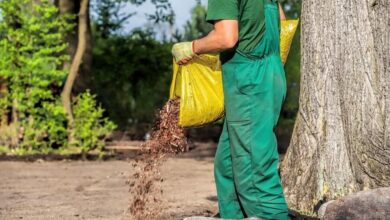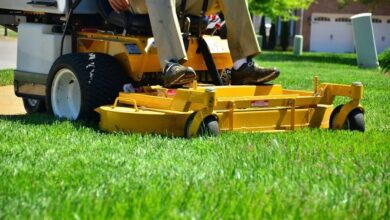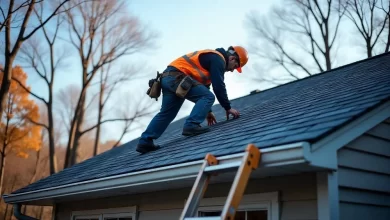4 Common Challenges in Growing Alstroemerias: How to Overcome Them

Are you struggling with growing alstroemerias? Don’t worry, we’ve got you covered!
In this article, we will address four common problems that many gardeners encounter when growing these beautiful flowers.
Whether it’s soil preparation, sunlight and temperature requirements, watering techniques, or pest and disease management, we will provide you with practical tips to overcome these challenges.
So, grab your gardening gloves and let’s dive into the world of alstroemerias!
Proper Soil Preparation
To ensure healthy growth, you should make sure you’re using the right soil mix for your alstroemerias. Choose a well-draining potting mix that retains moisture but doesn’t become waterlogged. Mix in some organic matter like compost to improve the soil’s fertility.
The right soil will provide your alstroemerias with the necessary nutrients and aeration for their roots to thrive. Once you have the soil ready, it’s time to consider the next crucial factor: adequate sunlight and temperature.
Adequate Sunlight and Temperature
Make sure you’re providing enough sunlight and maintaining the right temperature for your alstroemerias to thrive. Here are some helpful tips:
- Place your alstroemerias in an area that receives at least 6 hours of direct sunlight each day.
- Keep the temperature between 65-75°F during the day and around 50-55°F at night.
- Provide shade during the hottest part of the day to prevent overheating.
Now, let’s move on to the next section about watering techniques.
Watering Techniques
Don’t forget to water your alstroemerias regularly, making sure the soil stays moist but not waterlogged. Alstroemerias thrive in well-drained soil, so be careful not to overwater them.
It’s best to water deeply, allowing the water to reach the roots, but avoid excessive watering that could lead to root rot.
Now that you have watered your alstroemerias properly, let’s move on to pest and disease management.
Pest and Disease Management
When it comes to growing alstroemerias, you may encounter some common pests that can cause damage to your plants. These pests include aphids, spider mites, and thrips.
However, there are effective methods for pest control that you can implement to protect your alstroemerias and ensure their healthy growth.
Common Pests that Affect Alstroemerias
There’s a variety of common pests that can affect alstroemerias. These pests can wreak havoc on your beautiful flowers, but don’t worry, there are ways to combat them.
Here are some pests to watch out for:
- Aphids: These tiny insects can suck the sap out of your alstroemerias, causing stunted growth.
- Spider mites: These pests create fine webs and feed on the leaves, leaving them yellow and speckled.
- Slugs: These slimy creatures can devour your alstroemeria leaves overnight.
- Thrips: These tiny insects can cause your alstroemerias to have distorted flowers and damaged leaves.
Now that you know the common pests, let’s move on to effective methods for pest control.
Effective Methods for Pest Control
One way to combat pests affecting alstroemerias is to regularly monitor your plants for any signs of infestation. By keeping a close eye on your plants, you can quickly identify any pests that may be causing damage. Once you spot a problem, take immediate action to control the pests and prevent further damage.
In addition to pest control, pruning and maintenance play a crucial role in keeping your alstroemerias healthy and thriving.
Pruning and Maintenance
To keep your alstroemerias healthy and vibrant, make sure you regularly prune and maintain them.
Pruning stimulates new growth and prevents the plant from becoming overcrowded.
Removing faded blooms promotes continuous flowering and prevents seed production.
Regular maintenance, such as watering and fertilizing, ensures that your alstroemerias receive the nutrients they need to thrive.
Now, let’s move on to explore different propagation methods for these beautiful flowers.
Propagation Methods
If you want to propagate alstroemerias, there are two main methods you can try: dividing clumps and growing from seeds.
Dividing clumps involves separating the root system of an established plant into smaller sections, each with their own shoots and roots.
On the other hand, growing from seeds requires collecting and sowing the seeds of alstroemerias, which can take some time and patience to see results.
Dividing Clumps
When dividing clumps, you’ll need to make sure each section has a healthy amount of roots. Here are some tips to help you successfully divide your alstroemerias:
- Use a sharp, clean knife or garden spade to cut the clump into smaller sections.
- Make sure each section has at least three to five healthy stems. This will ensure that each new plant has enough foliage to support growth.
- Transplant the divided sections into well-drained soil, and water them thoroughly.
Now, let’s move on to growing alstroemerias from seeds.
Growing from Seeds
Start by selecting a well-lit area in your garden to sow the alstroemeria seeds. Make sure the soil is well-drained and fertile. Dig small holes and place the seeds about 1 inch deep.
Water them regularly, keeping the soil moist but not waterlogged. In a few weeks, you’ll see the seeds germinate and sprout.
Now, let’s move on to troubleshooting common issues that may arise during the growing process.
Troubleshooting Common Issues
One common issue when growing alstroemerias is that the leaves may turn yellow due to overwatering. To troubleshoot this problem, follow these steps:
- Check the soil moisture: Stick your finger about an inch into the soil. If it feels damp, hold off on watering.
- Adjust watering schedule: Alstroemerias prefer well-drained soil, so water them only when the top inch of soil feels dry.
- Improve drainage: If the soil is consistently wet, consider adding organic matter or perlite to improve drainage.
Frequently Asked Questions
How long does it take for Alstroemerias to bloom?
Alstroemerias typically take about 2 to 3 years to bloom. During this time, ensure they receive proper sunlight, well-draining soil, and regular watering. With patience and care, you’ll soon enjoy their beautiful blooms.
Can Alstroemerias be grown in containers?
Yes, alstroemerias can be successfully grown in containers. They are well-suited for this because they have a compact growth habit and can thrive in the confined space of a pot.
What is the best time of the year to plant Alstroemerias?
The best time of year to plant alstroemerias is in the spring, after the last frost. This will give them a chance to establish before the heat of summer.
How tall can Alstroemerias grow?
Alstroemerias can grow up to 3 feet tall, adding a beautiful touch to your garden. They thrive in well-drained soil and full sun. With proper care, you can enjoy their vibrant blooms throughout the year.
Are Alstroemerias toxic to pets?
No, alstroemerias are not toxic to pets. They are considered non-toxic plants, so you don’t have to worry about your furry friends getting sick if they come into contact with them.
Conclusion
In conclusion, when growing alstroemerias, you need to make sure you have prepared the soil properly and provided them with adequate sunlight and temperature.
It is important to water them correctly and manage any pests or diseases that may arise. Regular pruning and maintenance will also help ensure their health and growth.
Lastly, knowing the proper propagation methods can help you expand your alstroemeria collection. By addressing these common problems, you can enjoy beautiful and thriving alstroemerias in your garden.




